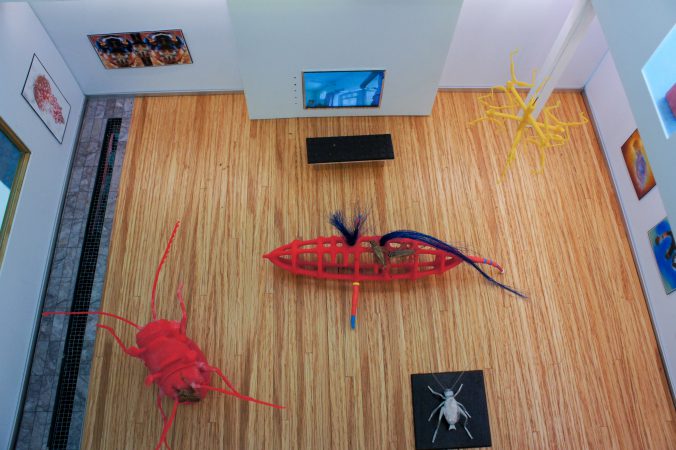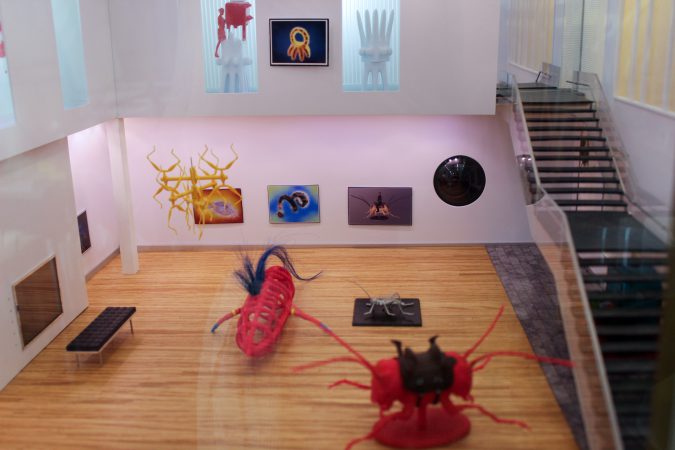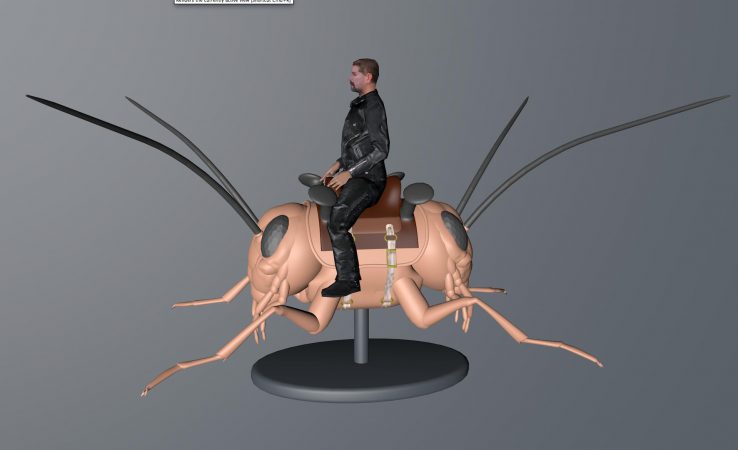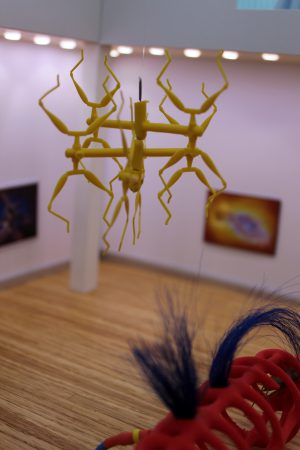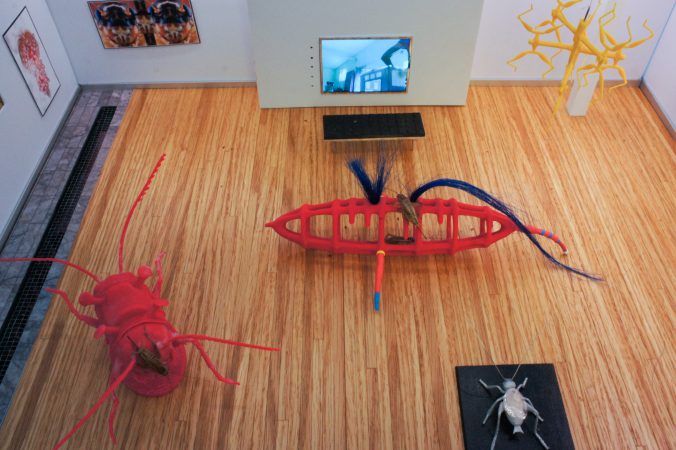Transspecies by Ken Rinaldo is an art/science exhibition created for The Museum for Insects by Amy Youngs. Amy invited me to make this interspecies exhibit in her mini-museum, which features artwork specifically designed, to house and entertain crickets with contemporary art.
Filling a complete museum of this scale was not easy, though was more manageable than making large-scale installations. As I conceived of these artworks, I looked at cricket perception, relative scale, color, distinctive cricket head markings, and their overall form. I tried to imagine what they would like to see, hear and interact with, in their museum, as this was, after all, a chance to create interactive interspecies art for crickets.
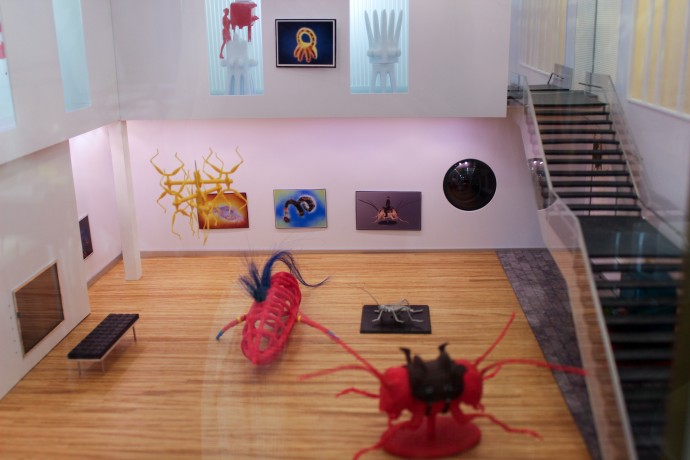
During this period, I was also working on the seed print series and realized the crickets would likely see my 3D works as actual seeds…though they were constructed artificial seeds. I felt they would appreciate the visuals of seeds as suggestive of food.
I also reproduced a photo of the distinctive pattern of the cricket head though with abstraction. The marking is distinctively cricket though I felt that abstraction of that sort, especially as regards recognition of another cricket, would allow the cricket to understand and at least register this work as some sort of portrait.
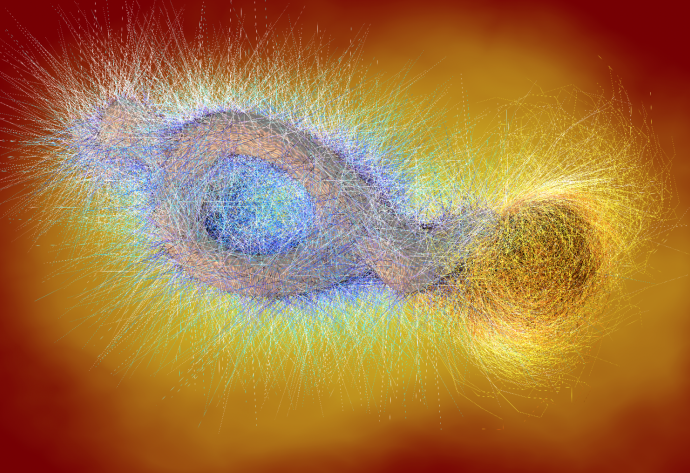
I was curious to see if monkey bars for crickets built in 3D software and rapid prototyping would allow them to enter and climb onto the miniature sculpture, so when they did, I was thrilled. I also was excited to create a sound work for them created with their chirps shifted up and down in frequency, rhythm, and tempo with Melodyne software below.
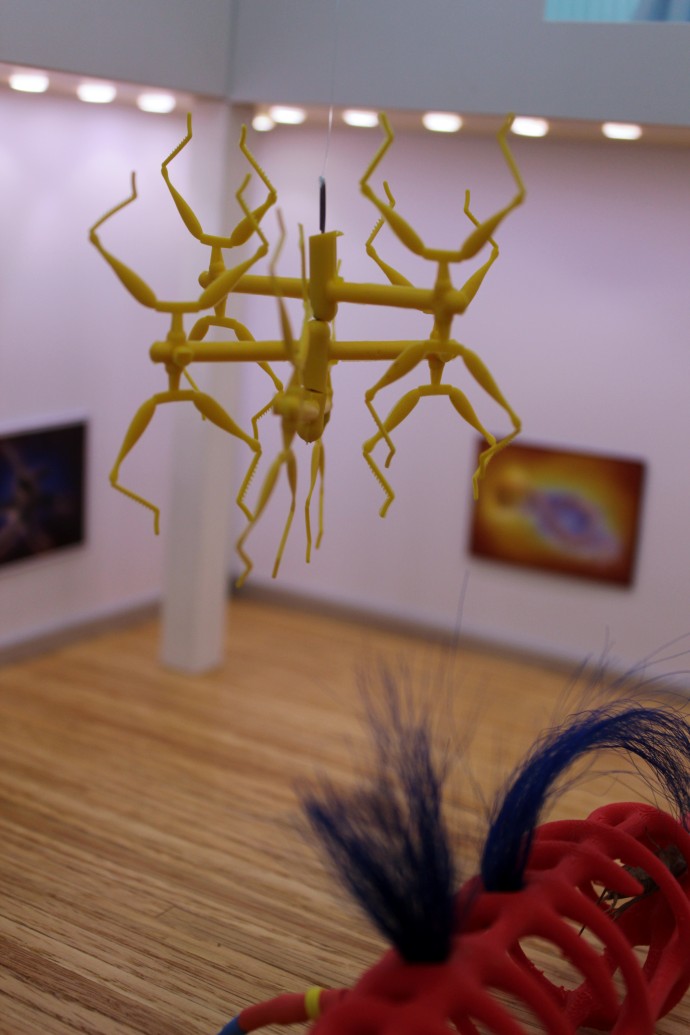
Bringing cricket and human closer together, I 3D modeled a double-headed cricket on a cricket body and rapid-prototyped this with an artificial saddle. Again, I felt the cricket would want to see cricket figuration.
The saddle on the cricket was meant to allow the human viewer/participant to psycho-project themself onto the cricket rodeo sculpture. A yellow mobile created with crickets legs found in a fishing lure store again served to assert cricket form and interest.
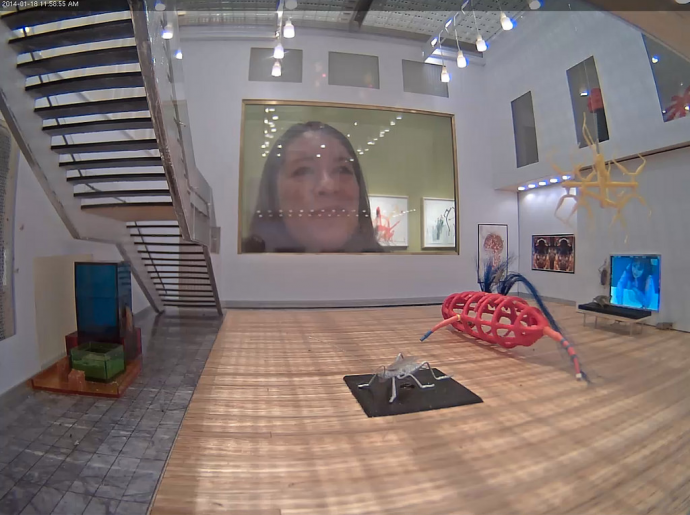
If that was missed, I also had a print of that on the wall to scale below.
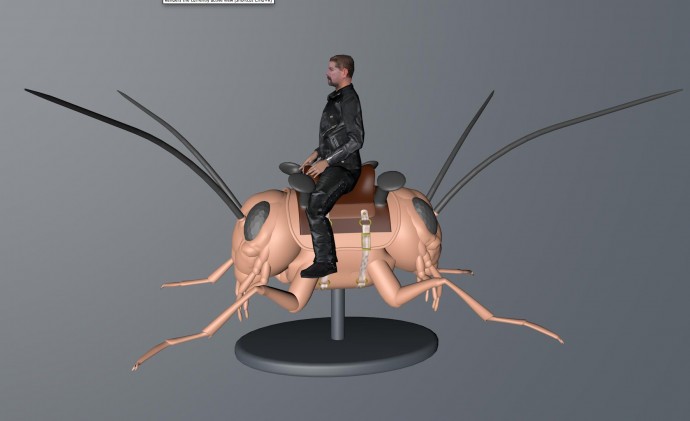
When talking about the Museum for Insects, Amy Says, “Inside, crickets can interact with hands-on/legs-on exhibits, enjoy food and drink from the café, and experience live humans, both through a picture window and through a videophone chat that connects the Museum for Insects to the humans visiting the Peabody Essex Museum. Humans visiting us from the internet can visit our live webcam and activate a cricket puppet and electronic chirping instruments. Crickets deserve some respect – and a visit to their museum.
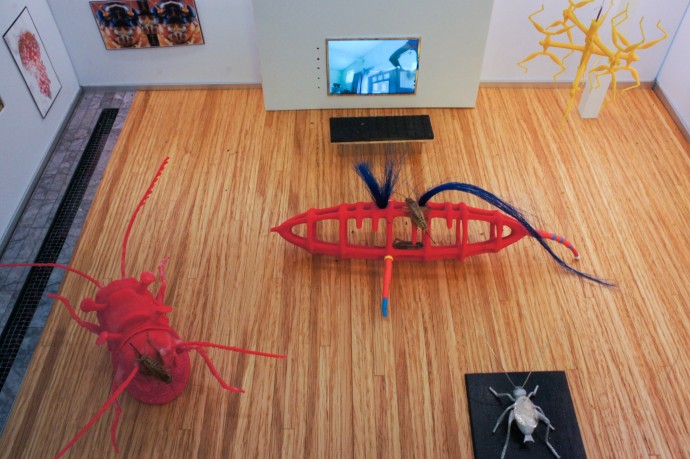
We humans can come along too, but we must shrink ourselves to fit inside the Museum for Insects. And so we don’t crush anyone. This museum is a space for friendly interaction between humans and crickets. With a combination of contemporary artwork and current communication technologies, we hope to increase human appreciation for insects and to provide a safe and enjoyable experience for the house cricket museum-goers.”
The list of works I produced for this mini-exhibition includes:
Rodeo Cricket Sculpture: 3D modeling and rapid prototyped sculpture.
Rodeo Cricket: Mini Giclee Print.
Bee Seed: Mini Giclee Print,
Hairy Light Seed: Mini Giclee Print.
Branch House Sculpture: rapid prototype, human hair, and shrink wrap tubing.
Plastic Bloom sculpture: 3D modeling and rapid prototyped sculpture.
Star Seed: Mini Giclee Print.
Sploom Seed: Mini Giclee Print.
Worm Seed: Mini Giclee Print.
Cricket Leg Mobile: Silicone rubber.
Cricket Head Collage: Mini Giclee Print.
Glitch sculpture with female form: 3D rapid prototyped sculpture.
Sound Art Symphony for crickets: Melodyne manipulated cricket chirping.
EXHIBITIONS
PEABODY ESSEX MUSEUM, SALEM, MASSACHUSETTS, 2013
Displayed Trans-Species, a set of artworks designed to communicate with crickets in the Museum of Crickets by Amy Youngs.
Artist and director:
Design and rapid prototyping: Ken Rinaldo
3D modeling: Ken Rinaldo
CREDITS / TECHNICAL
The Museum for Insects by Amy Youngs
SHOW REQUIREMENT and DIMENSIONS
This work can be shown individually or in the Museum for Insects. For Trans-Species miniatures, rapid prototyping sculptures, contact Ken Rinaldo, and for the Museum of Insects, contact Amy Youngs.
KEYWORDS
robotics, trans-species art, crickets, museum, interactive art, transspecies
BIBLIOGRAPHY
